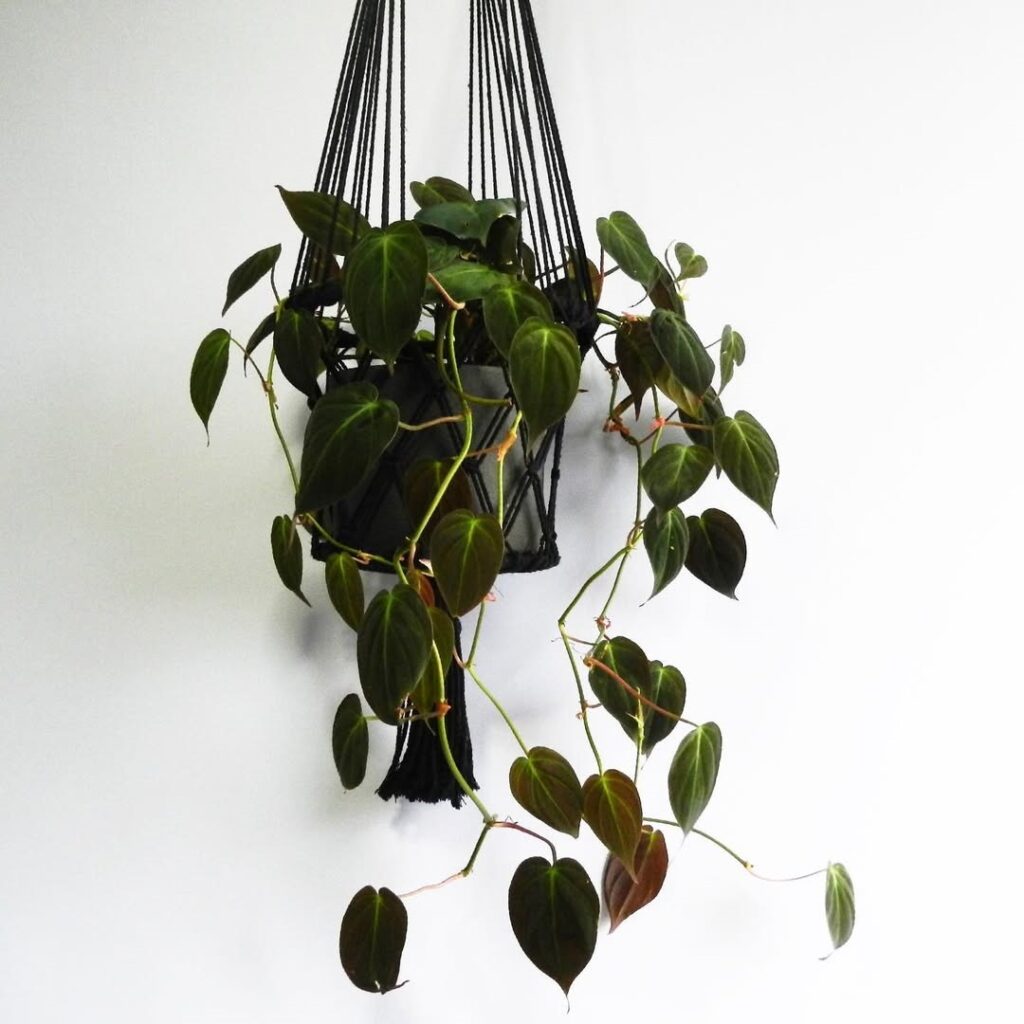The Heartleaf Philodendron, or Philodendron hederaceum, is a beloved houseplant known for its beautiful, heart-shaped leaves and easy care requirements. This vining plant is perfect for adding a touch of lush greenery to your indoor space and is an excellent choice for both seasoned plant enthusiasts and beginners. In this guide, we’ll cover everything you need to know to keep your Heartleaf Philodendron thriving.

Contents
Why Choose Heartleaf Philodendron?
Heartleaf Philodendron offers several benefits:
- Air Purification: It helps remove toxins like formaldehyde and benzene from the air.
- Low Maintenance: It requires minimal care, making it ideal for busy lifestyles.
- Aesthetic Appeal: Its trailing vines and heart-shaped leaves add a touch of elegance to any room.
Types of Heartleaf Philodendron
Philodendron hederaceum comes in several varieties, each with unique features that make them stand out:
Philodendron hederaceum ‘Oxycardium’

This is the classic Heartleaf Philodendron with dark green, heart-shaped leaves. It’s known for its resilience and ease of care, making it a popular choice for indoor gardeners.
Philodendron hederaceum ‘Brasil’

‘Brasil’ is a variegated variety with striking green and yellow leaves. The contrasting colors make it an eye-catching addition to any indoor garden. It’s just as easy to care for as the classic variety but adds a bit more visual interest.
Philodendron hederaceum ‘Micans’

‘Micans’ features velvety, dark green leaves with a beautiful iridescent sheen. The leaves have a slightly reddish tint when young, adding depth and richness to its appearance. It’s perfect for those looking for a unique texture in their indoor garden.
Philodendron hederaceum ‘Lemon Lime’

‘Lemon Lime’ boasts vibrant, chartreuse leaves that brighten up any space. This variety is ideal for adding a pop of color to your indoor garden and can be a stunning focal point.
Philodendron hederaceum ‘Variegata’

‘Variegata’ has unique variegated leaves with shades of green and cream. Each leaf has a different pattern, making this variety particularly captivating. It requires slightly more light to maintain its variegation compared to other varieties.
Ideal Growing Conditions
Light
Heartleaf Philodendron is highly adaptable and can thrive in a range of light conditions, from low to bright indirect light. It grows best in bright, indirect light but can tolerate low light, making it perfect for various indoor spaces. Avoid direct sunlight, which can scorch the leaves.
Water
Heartleaf Philodendron prefers to dry out slightly between waterings. Water when the top inch of soil is dry, which is typically every 1-2 weeks. Overwatering can lead to root rot, so it’s important to avoid letting the plant sit in water.
Soil
Use a well-draining soil mix. A standard potting mix with added perlite or sand works well. Ensure the pot has drainage holes to prevent water from pooling at the bottom.
Temperature and Humidity
Heartleaf Philodendron prefers temperatures between 65-85°F (18-29°C). It thrives in moderate to high humidity. If your home has dry air, especially in winter, consider using a humidifier or misting the leaves occasionally.
Fertilizing
Feed your Heartleaf Philodendron during the growing season (spring and summer) with a balanced liquid fertilizer diluted to half strength. Fertilize once a month to provide essential nutrients for healthy growth.
Potting and Repotting
Heartleaf Philodendron can stay in the same pot for several years. However, when the plant outgrows its pot or you notice roots coming out of the drainage holes, it’s time to repot:
- Choose a pot that is 1-2 inches larger in diameter than the current one.
- Fill the new pot with a well-draining soil mix.
- Gently remove the plant from its old pot and shake off excess soil.
- Place the plant in the new pot and fill around it with soil.
- Water lightly and place it in a suitable location.
Propagation
Heartleaf Philodendron is easy to propagate through stem cuttings:
- Cut a healthy stem from the plant, including a few leaves and nodes.
- Place the cutting in water, ensuring at least one node is submerged.
- Change the water weekly until roots form, then plant in soil.
- Alternatively, place the cutting directly in soil and water sparingly until roots form.
Common Problems and Solutions
Yellow Leaves
Yellow leaves are often a sign of overwatering or insufficient light. Allow the soil to dry out between waterings and ensure the plant receives enough indirect light.
Brown Tips
Brown tips on the leaves can be caused by dry air or inconsistent watering. Increase humidity by misting the leaves or using a humidifier and ensure even watering.
Root Rot
Root rot is caused by overwatering. Remove affected roots, repot in fresh soil, and water sparingly. Ensure the pot has proper drainage to prevent waterlogging.
Styling Tips
Heartleaf Philodendron is a versatile plant that can be styled in various ways:
- Hanging Baskets: Let the vines trail down beautifully from a hanging basket.
- Shelf Decor: Place on a high shelf and allow the vines to cascade down.
- Trellis or Pole: Train the vines to climb a trellis or moss pole for a vertical display.
- Propagation Station: Create a propagation station with multiple cuttings in water for a modern, minimalist look.
Conclusion
The Heartleaf Philodendron is a resilient and attractive addition to any indoor garden. With minimal care, it will reward you with its lush, trailing vines and air-purifying benefits. Whether you’re a seasoned plant parent or a beginner, the Heartleaf Philodendron is sure to thrive and bring a touch of natural beauty into your home.
